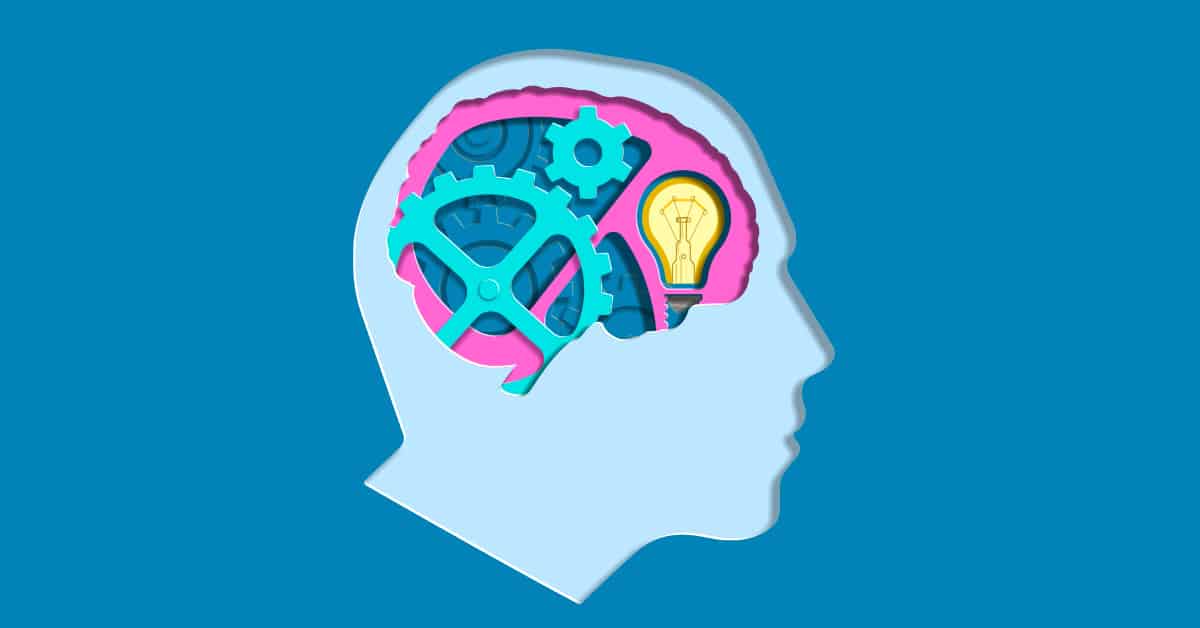For many organizations, employee benefits communication kicks into high gear during open enrollment season. There’s a blitz of emails, a series of educational seminars, fliers posted all over the office, and a flurry of forms to sign. Large groups may even bring in their benefits providers for a day-long benefits fair, complete with snacks, swag, and information packets.
After that, though, employees typically hear very little about their benefits. Sure, there may be an occasional email update or a new laminated sign in the office kitchen. However, few employers have a year-round employee benefits communication plan.
This is a missed opportunity. Once a year isn’t enough to make sure employees actually understand and are properly using their benefits — and the proof is in the pudding. In our State of Employee Benefits Report, 1 in 5 employees said they’d like more benefits education, and 1 in 4 told us they’re spending 7+ hours researching their benefits. That’s right, 7 or more hours.
So if employers and benefits consultants can intercept employees in those moments of confusion, when they’re already looking for answers about their benefits throughout the year, then we can nudge employees towards more informed decisions that improve their personal wellness and financial security. And employers benefit from better employee engagement, too: The work environment is more creative, stress goes down, employee retention rate goes up, and profitability increases as much as 350%.
It’s important to create a year-round employee benefits communication plan, and to know how to measure success and refine your strategy as the year progresses. Here’s how.
What are the goals of a year-round employee benefits communication plan?
- Help employees retain information. The top-level goal of a 12-month employee benefits communication strategy is to help employees retain information. Employees won’t remember everything you share in an hour-long benefits presentation, especially when they need to use their plans months after they first chose them. Without ongoing communication, your organization sends the message that open enrollment is the only time to be thinking about benefits.
- Go beyond the benefits booklet. Communication throughout the year also enables you to go beyond the benefits booklet. There are so many actions employees can take outside of open enrollment to save money for themselves (and for you), while getting the care they need. But they’re probably not going to go back to a lengthy, jargon-filled document to find answers—which is why we need to find other ways to engage them when they’re already thinking about their benefits.
- Eliminate benefits mistakes. Building a year-round employee benefits communication plan helps to eliminate common mistakes. Data shows that employees still aren’t making the best possible use of their benefits throughout the year: the average employee isn’t saving enough money to cover their out-of-pocket healthcare expenses, and only 4% of employees are investing their HSA dollars for future savings. An employee benefits education program helps employees avoid these mistakes.
- Increase benefits use. Frequent reminders also ensure benefits get used. Employees will remember that they have free access to legal or financial advice, or that they don’t have to pay for gym membership or dry cleaning. This gives employees peace of mind, as they spend less time thinking about the stress of life outside of work and can better focus on their job during the work day.
- Make data-driven decisions. Finally, ongoing engagement gives HR teams more opportunities to collect data from employees, which in turn allows employers to make smarter decisions about how they communicate. Studying the results of these surveys, focus groups, or anonymous interviews leads to better communication about benefits, as HR teams get a sense of the benefits questions that employees have, along with the best channels and tactics for providing answers.
What should a year-round employee benefits education calendar look like?
There are two approaches to an employee benefits communication cadence: calendar-based and action-based.
A calendar-based approach is more traditional, and usually involves choosing quarterly or monthly themes that align with whatever is top of mind for employees during that time.
An action-based approach is a newer concept that takes an employee’s actual benefits usage into account. The idea is to communicate with employees when they’re already taking action on their benefits (like when they’re filing a claim or saving money in their HSAs)—and nudge them towards smarter decision-making in that moment.
Calendar-based benefits communication example
A monthly or quarterly calendar provides the opportunity to focus on a set of benefits-related topics throughout the year. For most companies, Q4 is the perfect time to emphasize open enrollment, while the other three quarters offer a chance to hone in on specific categories of benefits such as health, lifestyle, and wealth.
In choosing content themes, think about what’s top of mind for employees over the course of those three months. Then, look at how your benefits offerings align with those needs. Here’s one way to think about it:
- Q1 is often associated with “New year, new you!” What benefits can help employees plan for their future throughout the year – and take the stress out of the decision-making process?
- Q2 marks the beginning of spring. As employees spend more time outdoors, they may be focusing on exercise. What benefits best address overall health and well-being?
- Q3 is when employees go on vacation – and as they return to work, their children return to school. What benefits keep families protected on the road and prepare them for the classroom?
- Q4 is open enrollment season. Do employees have information at their disposal in the right format to help them pick the right benefits plans for their families?
Here’s an example of themes you could incorporate those themes into a monthly benefits communication strategy:
| January New Year’s Resolutions New deductible reminder | February Heart Month / heart health Wise Consumer Month | March Daylight Savings National Nutrition Month |
| April Stress Awareness Month Allergy season reminder | May Mother’s Day Mental Health Month | June Men’s Health Month Education benefits |
| July Fireworks safety Sunscreen / sun safety | August Back to school Fall physicals | September Grandparent’s Day Elder care and estate planning |
| October Cold and flu prevention Dental Hygiene Month | November Smoke detector batteries Great American Smokeout | December Holiday season / giving FSA rollover reminder |
Action-based benefits communication example
An action-based employee benefits education program is all about intercepting employees in the moments that matter.
The hard truth is that employees don’t care much about their benefits—until they’re using them. So while it never hurts to remind employees about their EAP benefits during Mental Health Awareness Month or share a few cardio health tips during Heart Month, it’s not enough.
We need to offer employees guidance when they’re already engaged, thinking about their benefits, and primed for helpful tips. That’s when they’re more likely to take you up on your advice, and make smarter benefits decisions—that save themselves (and your company) time and money.
What does that look like? Here are a few examples:
| Employee Action | Message |
|---|---|
| Logs into HSA | “Add $1,000 more to your HSA this year to fully cover your out-of-pocket expenses.” |
| Files a claim for an ER bill | “You may be overpaying for prescriptions. Here’s a resource to compare pharmacies and make sure you’re getting the best deal.” |
| Searches for in-network providers | “Did you know Urgent Care treats that health condition for a fraction of the cost? Here are a few locations in your area.” |
| Searches for in-network providers | “Have a routine question for your doctor? Schedule a telehealth appointment instead of an in-person visit and save up to 50% on co-pays.” |
Pro Tip: ALEX can help!
Talk to your vendors and benefit carriers to see if they have specific promotions or theme months of their own. This has two key benefits. It can fill gaps in your content calendar (we’re looking at you, August), and it will keep employees up to date on new offerings or programs from your partners.
What are the most effective employee benefits communication channels?
The correct answer is “All of the below.” After all, not only do people have many different learning styles, but different content works better to convey different types of information. That’s why a multichannel approach is critical to engaging employees with benefits communication.
Consider how the following modalities would work best for your employee population:
- In-person sessions show employees the “face” of benefits at their organization and offer an overview of what to expect, especially during open enrollment.
- Office hours are good for employees who want to ask specific or private questions.
- Webinars (especially pre-recorded ones) benefit employees who can’t come into the office or otherwise follow along with real-time presentations.
- Videos can help break down complex topics for employees who learn better by hearing things than by reading things.
- Podcasts work well for employees who learn by listening. Busy workers will appreciate an option to listen during their commute or after hours, too.
- Posters and fliers with visual aids help office-based employees see information at a glance as they go about their day.
- Postcards mailed to an employee’s home will get the attention of a partner, who will likely want to start a benefits conversation.
- Text messages or chat software can target employees who don’t typically work at a desk or computer, such as retail employees, field workers, or anyone who’s part time. This also helps reach employees populations who prefer digital content.
- Emails can reach everyone in the company with important messages from leadership.
- Intranet forums or social sites help employees share benefits experiences with each other – including people they may not have thought to ask.
- Apps such as ALEX Benefits Counselor can provide individually tailored content as well as recommendations based on employees’ specific needs.
Using so many channels may sound like a lot of work, but don’t forget that you can (and should) repurpose benefits communication in many different ways. Pull infographics, short emails or text messages, or fact sheets from the slides of an open enrollment presentation. Snippets from a long webinar can be turned into shorter videos, and segments that don’t require visuals can be turned into podcasts. Emails can be shared on the Intranet as blog posts. Any paper brochures from in-person benefits fairs should be saved electronically.
How do you make employee benefits communication engaging for everyone in your organization?
The key to an effective employee benefits communication strategy is making sure that your content sticks with employees. Ongoing interaction gets employees to think about their benefits throughout the year. This leads to more informed benefits choices – and less uncertainty about whether employees and their families have the right coverage.
Here are a few things to keep in mind as you develop and refine your strategy for great benefits communication. This will help you select the most appropriate communication channels and ensure that employees are getting the most out of the content you’re sharing with them.
| Relevance | • When in doubt, poll or survey employees to know their most pressing questions • Seek feedback on preferred communication channels and timing of messages • Make sure all departments or groups across the company provide input |
| Clarity | • Keep messages short and to the point; break up long emails if necessary • Avoid jargon and use basic English (plus other key languages for your workforce) • Include a clear call to action with every communication |
| Personalization | • Use phrases like “you should” instead of “employees should” • Use employee testimonials and endorsements, not just facts and figures • Consider tools like ALEX Benefits Counselor that offer personal recommendations |
| Timing | • Avoid communication at busy times, like end-of-quarter deadlines • Test day/time of messaging for open rate and other engagement metrics • Send messages on Friday if employees need time to think and discuss with family |
| Incentive | • Consider incentives for taking action, such as downloading an app or resource • Offer rewards to employees who share personal stories • Offer gifts to anyone outside HR who volunteers to research and prepare content |
| Authority | • Include summaries of and links to reputable resources • Include messages from executive leadership on sensitive issues like benefit changes • Provide managers with materials to engage with direct reports regularly |
How do you measure the success of your employee benefits communication strategy?
As the popular saying goes, you can’t manage what you can’t measure. One of the easiest ways to measure the success of your employee benefits communication strategy is to capture employee feedback.
This seems like a no-brainer, but it’s important to make sure that your polls, surveys, and conversations with employees give you the information you need. Here’s a few tips for getting this process right.
- Use the Likert scale when you want to capture information about a range of options.
- Make sure every question has a valid response. When in doubt, include an “Other” field.
- Don’t cover more than one topic per question. This makes honest answers difficult.
- Explain terms such as “deductible” or “premium.” Don’t assume survey-takers know what they mean.
- Get as much feedback as possible, with incentives and messages from company leadership as leverage.
- Aim for a response rate that’s a cross-section of your company population. Send reminders to particular groups if their response rate is lagging.
How can technology improve an employee benefits communication strategy?
You want to help your employees make educated decisions about health, lifestyle, and financial benefits – but you can’t be there 24/7 to answer their questions and provide individually tailored advice. ALEX Benefits Counselor is an interactive education and decision support tool that gives employees a personalized experience at their fingertips.
ALEX can help employees make the right benefits decisions whether they need to pick a health plan, find a doctor, or decide what to put in a 401(k). Learn more today and see how ongoing engagement through ALEX can give your employee benefits communication strategy a boost.


